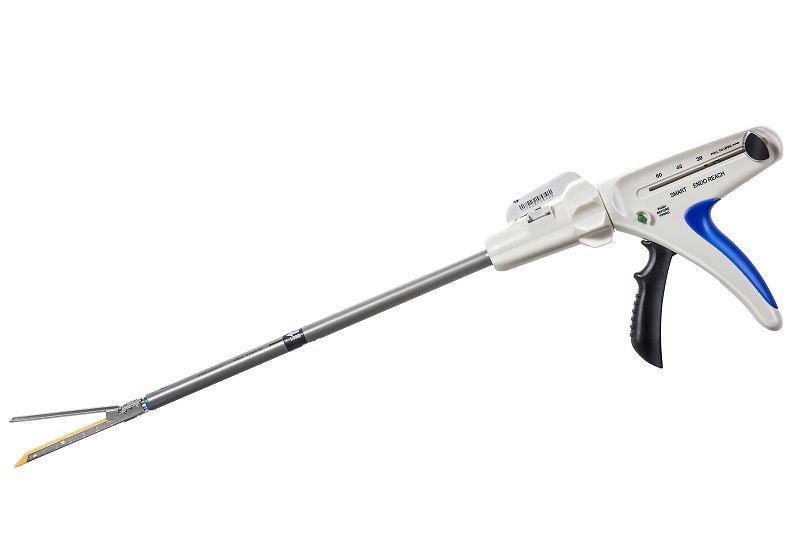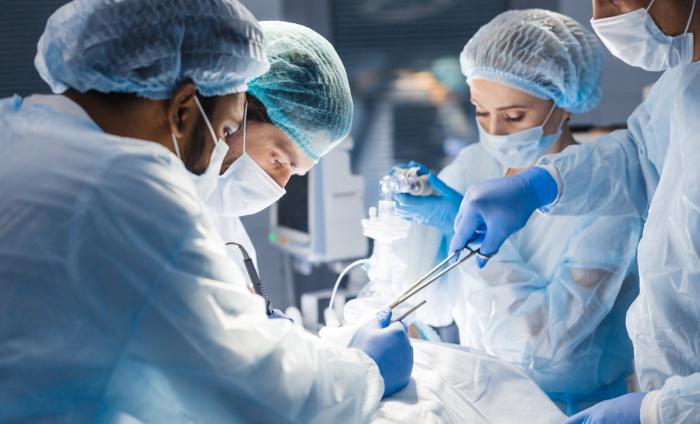Surgical Solutions
WHAT ARE SURGICAL SOLUTIONS
Surgical solutions are an indispensable part of healthcare as they play an important role in disease treatment. While surgery is used to treat a broad spectrum of diseases, it is also often used for disease prevention. Some examples include circumcision surgery to reduce HIV transmission and removal of malignant tumours to prevent worsening of health conditions etc. In both treating and preventing diseases, surgical solutions play a crucial role in ensuring that the surgery leads seamlessly to proper recovery.
HOW PREVALENT IS SURGERY AND WHY IT IS INCREASING
Every year, there are about 313 million surgical procedures in the world. Of which, C-sections are the most common major surgery. In 2017, there were approximately 59 million general surgeries performed worldwide.
There are many reasons behind the global increase in surgeries, for example:
- Obesity and increased prevalence of metabolic and cardiovascular diseases
- Ageing population and increased prevalence of ageing diseases (e.g. cataracts, etc.)
- Trends in cosmetic surgeries and non-essential surgeries
- Advances in diagnostics leading to increased rate of treatment of diseases
- Increasing demand for C-sections
WHAT IS IMPORTANT IN SURGICAL CARE
In any surgical procedure, multiple considerations affect a patient's eventual healing process. An important consideration for the surgical team is to ensure sterility of the surgical site and ensure zero infection.
Other considerations include:
- Incision length and direction – Affects the eventual cosmetic appearance of the operation site
- Dissection technique and tissue handling – Clean incision with evenly applied pressure and careful handling of the tissues by the physician to promote faster healing
- Maintaining moisture in tissues – Periodic irrigation of tissues with warm saline or covering with saline-moistened sponges prevent tissues from drying out in long surgical procedures
- Hemostasis - a natural healing process to prevent and stop bleeding is very important in ensuring that the physician can see the surgical site clearly for better surgical accuracy. Before closing the surgical site, it is also important to achieve hemostasis so that hematomas (or blood clots forming outside blood vessels) do not form after the surgical procedure. This reduces the possible risk of infections and proper wound healing
- Cellular response to closure materials – When surgical devices such as sutures are used to close a wound, the human recognises this implant as a foreign body and produces a reaction (E.g., swelling). Depending on the type of closure material and the individual, this body reaction can range from mild to severe, especially if there are complications such as infection and allergies
- Eliminating dead space in the wound – Dead space can result within the wound where tissues below the skin are not aligned along its edges or when air/fluid is trapped within the tissue layers. This dead space encourages microorganism growth that can result in infection
- Immobilization of the surgical wound - so that any post-surgery activity of the patient does not place undue stress on the wound. For instance, if a patient strains to cough after an abdominal procedure, this can affect the healing of the abdominal wound
OFTEN USED SURGICAL PRODUCTS
The choice of closure device during surgery plays a crucial role in affecting healing rates and the patients’ risk of surgical infection. There are various types of devices for various purposes:
Staplers: Medical devices are often used in minimally invasive surgeries. Staplers can be both reusable or disposable and are generally made of plastic. They come loaded with disposable cartridges of surgical staples. They are quick in closing large and long incisions and are less painful than stitches. Other advantages include minimal tissue reaction and lower infection risks. Staplers can be powered or manual. Powered staplers are said to offer increased stability and higher precision stapling.
There are several categories of surgical staplers which are used for different types of surgeries. Most are categorised as either linear or circular:
- Circular staplers – Makes end-to-end, end-to-side or side-to-side surgical connections and are often used for digestive tract and colon surgeries. When “fired”, 2 staggered rows of staples in a circular layout is produced. This action causes the tissue to pinch together like rings or doughnuts and helps in connecting tube-like structures. A blade then slices the overlying tissue and seals the ends together.
- Linear staplers – Makes side-to-side or end-to-end surgical connections and is used to close internal organs before transverse dissections. When the stapler “jaws” closes, a row of staples is produced, which simultaneously closes the tissue while cutting the tissue between the staples. This action seals the open wound and prevents bleeding.

Sutures: Strand of material used in tying blood vessels or tissues together. Physicians select the most appropriate suture based on
- the amount of tension required for closing the wound,
- the number of tissue layers required to close,
- the depth of placement of the sutures,
- the anticipated amount of swelling and time required to remove the sutures.
Increasingly, suture materials are infused with various agents for improved handling, antibacterial properties to resist infections and visibility. Sutures are often classified as:
- Absorbable vs non-absorbable: Absorbable sutures are digested by body enzymes and lose their tensile strength after 60 days. On the other hand, non-absorbable sutures don’t and would have to be removed post-operatively.
- Monofilament vs multifilament (i.e., number of strands they’re comprised of): Monofilament has a single strand, is easier to pass through tissue and also resist harbouring microorganisms, hence reducing infection risks. However, they break easily when crimped or crushed and are more suited for vascular surgeries. Multifilament sutures are more flexible, pliable and have greater tensile strength. Therefore, they are more suited for intestinal procedures
- Barbed sutures are commonly used in abdominal and urological procedures. The barbs on the suture aids in continuous gripping of the tissue and thus retaining the tensile strength of the suture. This eliminates the need for surgical knots and thus knot-related complications. Advantages of barbed sutures are reduction in suturing times and hence, overall operating times.
Needles: To perform the wound closure, these sutures are threaded through different types of needles (i.e. different shapes and point geometry) in the surgical operating theatre to form various thread needle combinations that the surgeon requires.
The optimal needle possesses these qualities:
- Ability to carry suture material through tissue with minimal trauma
- Sharpness to penetrate tissue with least resistance
- Ability to bend without breaking
- Sterile and corrosion-resistant to ensure microorganisms or foreign material will not be introduced to the surgical site
Hemostatic agents: Agents used in reducing blood flow and stopping bleeding. They are categorised based on their functional characteristics:
- Mechanical sealant: Forms a physical barrier to stop blood flow and enable blood to rapidly clot on its surface. They are relatively inexpensive, easy to use and require no special storage conditions or preparation before use.
- Active sealant: Forms of thrombin differentiated by their plasma source (i.e. bovine, human, recombinant). The concentrated thrombin works by rapidly changing fibrinogen into a fibrin clot with blood clot formation being proportional to thrombin concentration.
- Flowable sealant: Combines both mechanical sealant and thrombin that obstructs blood flow while actively converting fibrinogen into fibrin onsite. It is most effective for localised bleeding as it provides thorough wound coverage.
- Fibrin sealant: Contains fibrinogen and thrombin which forms a fibrin clot upon mixing. When applied via a syringe-like applicator or sprayed at the bleeding site, it increases the rate of formation of blood clot.
Sealants work by creating a barrier impervious to the flow of most liquids. There are three types:
- Fibrin: Acting as both a hemostat and sealant, they are a moderate strength sealer. They are the most effective when applied to a very dry field,
- Polyethene glycol (PEG) polymer: PEG polymer sealants are commonly used in vascular and dura sealing to prevent blood and cerebrospinal fluid loss respectively. Being synthetic, their major risk is swelling.
- Albumin with glutaraldehyde: This is a strong and relatively more expensive tissue sealant for large blood vessel anastomoses and aortic dissections. It carries risks of tissue death and vessel blockage.
Topical Skin Adhesives: When the skin edges of a wound are close together, skin adhesives are an alternative to staplers and sutures in closing superficial wounds. The advantages of adhesives are that it’s rapid, cost-effective, doesn’t produce “track” marks along the healed wound and allows the patient to shower immediately with no fear of compromising the wound. Advancements in these adhesives have created products with improved transparency and flexibility for application over non-uniform surfaces, higher viscosity for better control and a protective seal for protection of the wound against bacterial penetration. However, they cannot substitute deep dermal sutures.
ACCESSIBILITY TO SURGICAL SOLUTIONS IN EMERGING MARKETS
Even with so many different types of wound closure devices, surgical site infections remain the most common healthcare-associated infection with a huge impact on patient care and outcomes. Hence, new closure devices aiming to address this issue are constantly being developed.
At Genesis MedTech, we are committed to developing quality surgical solutions that play this essential role in safeguarding the health of patients on a daily basis. While it does not generate the most exciting headlines, it plays a crucial yet often understated role in making quality healthcare accessible and affordable to many.
PARTNERSHIPS CAN CHANGE AND SAVE LIVES.
Read about our partnership models.

